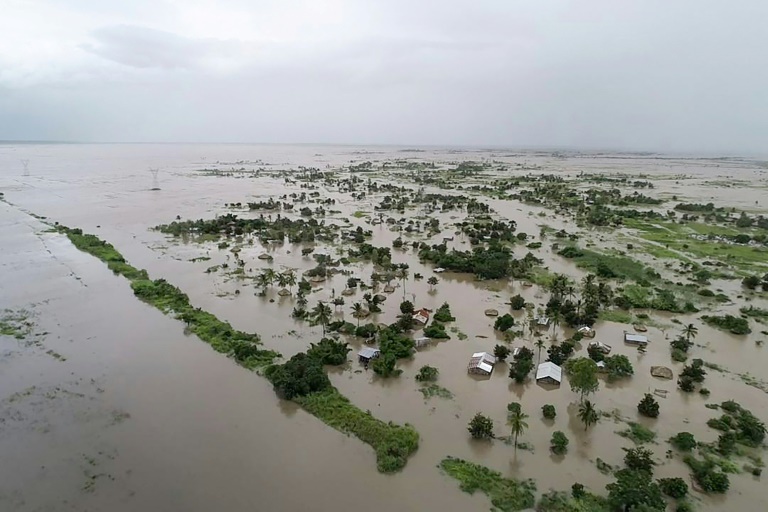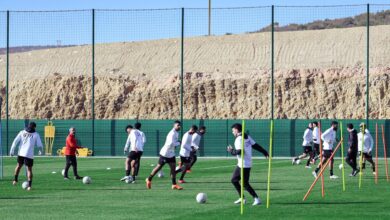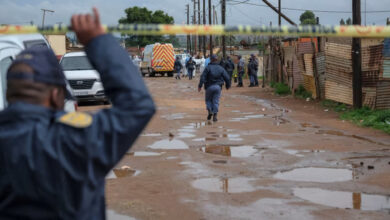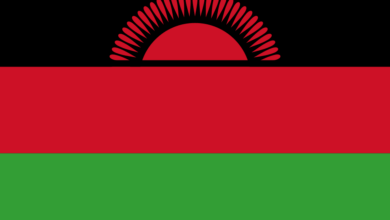
International aid agencies raced Wednesday to rescue survivors and meet spiraling humanitarian needs in three impoverished countries battered by one of the worst storms to hit southern Africa in decades.
Five days after tropical cyclone Idai cut a swathe through Mozambique, Zimbabwe and Malawi, the confirmed death toll stood at more than 300 and hundreds of thousands of lives were at risk, officials said.
“We’ve thousands of people… in roofs and trees waiting for rescue,” Caroline Haga, spokeswoman of International Federation of Red Cross said in the storm-ravaged Mozambican city of Beira.
“We are running out of time. People have been waiting for rescue for more than three days now,” she told AFP.
“Yesterday we rescued some 167 people from trees and roofs. Today we’ll continue that. Unfortunately we can’t pick up all the people, so our priority are children, pregnant women, injured people.”
Mozambican President Filipe Nyusi on Tuesday said 202 people had died, according to the latest toll, and nearly 350,000 people were risk.
In Zimbabwe, the death toll stood at 100 on Wednesday but was expected to surge to 300, while up to 15,000 people are estimated to have been hit by the storm.
In Malawi, nearly a million people have been affected and more than 80,000 forced from their homes, according to the UN.
Flood shock
Aid agencies said they were prepared for the cyclone which made landfall early Friday, but not for the massive floods that followed.
Mozambique bore the brunt from rivers that flow downstream from its neighbours.
“No one was prepared for the floods. The cyclone caused torrential rains in Zimbabwe and Malawi and all the water came here,” said Haga.
“Two rivers have overflown and there is flooding, we have several metres (10 feet) of high water,” said Haga.
Beira airport which was partially damaged by the storm and temporarily shut, had reopened to become the relief operations hub but is proving not large enough.
Air force personnel from Mozambique and South Africa have been drafted in to fly rescue missions and distribute aid which can only be airlifted as roads out of Beira have been destroyed.
The UN World Food Programme (WFP) said it was mobilizing aid for some 600,000 people, but warned the world had yet to appreciate the scale of the “massive disaster”.
So far, it has dispatched more than five tonnes of emergency provisions to the affected areas.
“WFP aims to support 500,000 to 600,000 people in the coming weeks,” spokesman Herve Verhoosel told reporters in Geneva on Tuesday.
“I don’t think that the world (has) realized yet the scale of the problem.”
A government worker who refused to give his name spoke from a roadside after he was rescued by boat in Nhamatanda, some 60 kilometers (40 miles) northwest of Beira, saying “this is the first time our generation has seen something like this”.
Poor countries
In Zimbabwe, at least 217 people are listed as missing in Chimanimani in Manicaland, an eastern province which borders Mozambique.
The district remains cut off after roads were swallowed by massive sinkholes and bridges were ripped to pieces by flash floods, leaving a landscape that Defence Minister Perrance Shiri said “resembles the aftermath of a full-scale war”.
Families were using hoes to dig through mounds of soil in search of their missing relatives, an AFP correspondent saw.
Zimbabwean Local Government Minister July Moyo said he had been told there “are bodies which are floating, some have floated all the way to Mozambique.”
The three countries are some of the poorest in the region and depend heavily on foreign aid.
In Rome, Pope Francis expressed “my pain and my closeness” for those caught up in the disaster.
“I entrust the many victims and their families to the mercy of God and I implore comfort and support for those affected by this calamity,” he said, addressing thousands of pilgrims in St. Peter’s Square.




